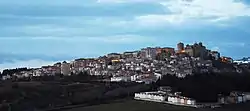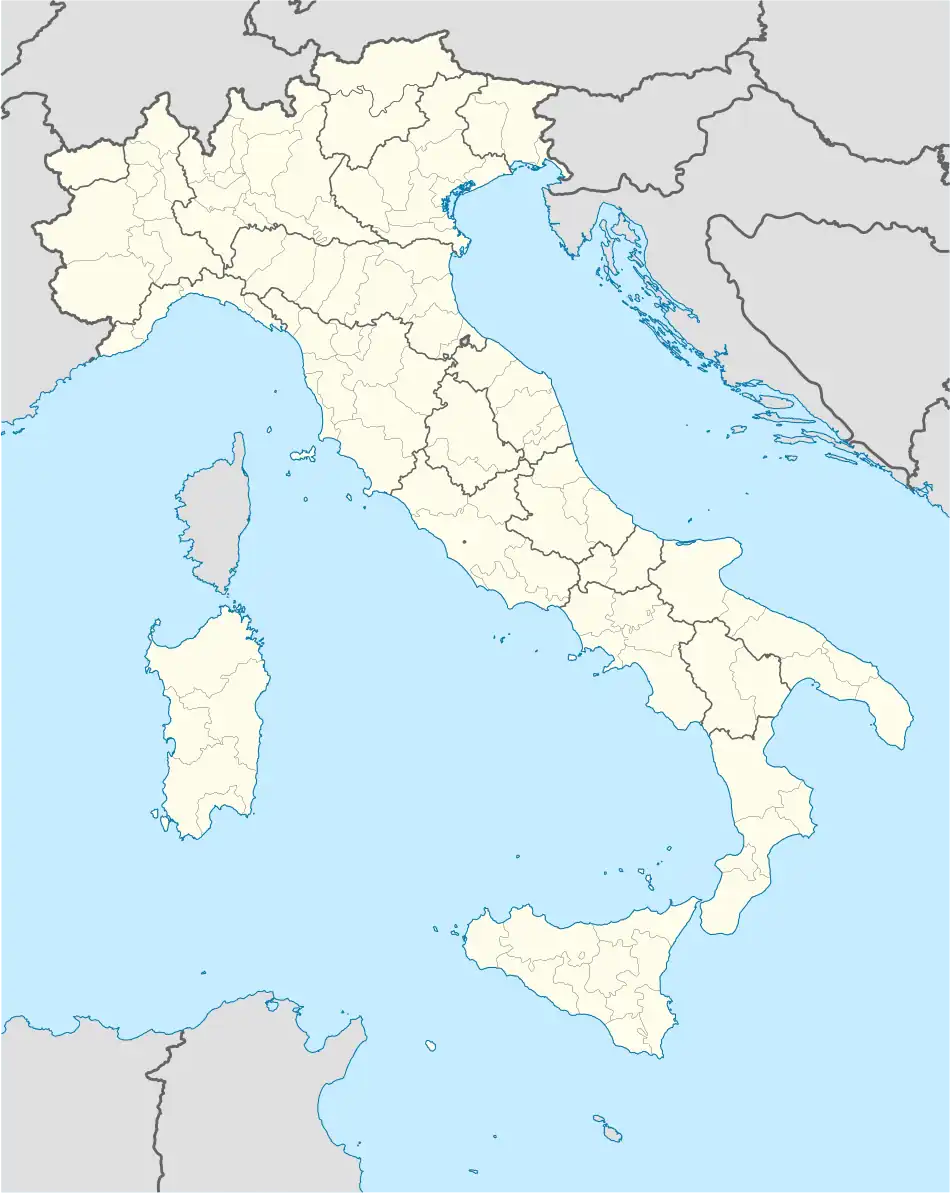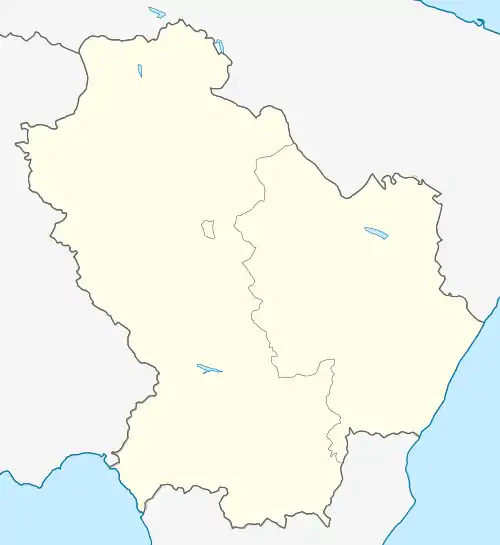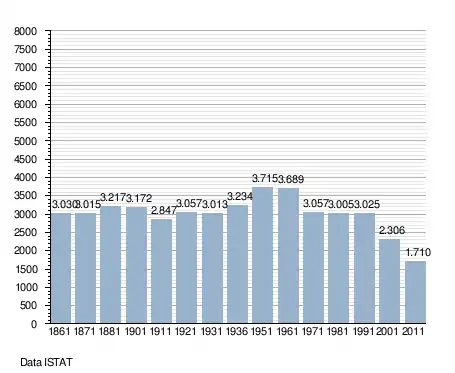San Mauro Forte | |
|---|---|
| Comune di San Mauro Forte | |
 | |
 Coat of arms | |
Location of San Mauro Forte | |
 San Mauro Forte Location of San Mauro Forte in Italy  San Mauro Forte San Mauro Forte (Basilicata) | |
| Coordinates: 40°29′N 16°15′E / 40.483°N 16.250°E | |
| Country | Italy |
| Region | Basilicata |
| Province | Matera (MT) |
| Government | |
| • Mayor | Nicola Savino |
| Area | |
| • Total | 86.89 km2 (33.55 sq mi) |
| Elevation | 540 m (1,770 ft) |
| Population (December 2008)[2] | |
| • Total | 1,803 |
| • Density | 21/km2 (54/sq mi) |
| Demonym | Sanmauresi |
| Time zone | UTC+1 (CET) |
| • Summer (DST) | UTC+2 (CEST) |
| Postal code | 75010 |
| Dialing code | 0835 |
| Patron saint | San Mauro abate |
| Saint day | 15 January |
| Website | Official website |
San Mauro Forte is a town and comune in the province of Matera, in the Southern Italian region of Basilicata.
History
The area was established in the sixth century.[3]
It was probably part of Magna Graecia.[4]
Geography
The town is on a hill, 540 metres (1,770 ft) above sea level, in the west central part of the province. To the north are the communes of Salandra (14 km/9 miles), Oliveto Lucano (15 km/9 miles) and Garaguso (17 km/11 miles). To the east is Ferrandina (31 km/20 miles) with Craco (25 km/15 miles) and Stigliano (31 km/20 miles) to the south. Accettura is (14 km/9 miles) to the south. The provincial capital, Matera, is 70 km/44 miles away, while the administrative capital of the adjacent province, Potenza, is 66 km/41 miles away.
San Mauro Forte is included in the administrative grouping of Upland Communes of the Matera Hills.
Main sights
- Torre Normanna, "Norman Tower"[5]
- The sixteenth-century Church of Santa Maria Assunta, in which are preserved valuable paintings from the eighteenth century;
- The Church of the Annunciation, built in the sixteenth century by Franciscan monks, with an adjoining convent;
- The Church of St. Mary of the Angels (also known as Chapel of the Rosary or Saint Lucia), of ancient origins;
- The eighteenth-century Church of St. Vincent, with a majolica tiled floor and an eighteenth-century organ;
- The noble palaces, such as Palazzo Arciaerie (today seat of the Town Hall) and Palazzo Lauria, famous for its Baroque-style portal.[6]
Religious festivals
- The Feast of Saint Maurus, 15 January
- Campanacci, the "Festival of the Cowbell", 16 January[7][8]
- St Anthony the Abbot, 17 January
- The Feast of Saint Roch, 3 September
Gallery
 Torre Normanna "Norman Tower"
Torre Normanna "Norman Tower" View of the village
View of the village La Chiesa madre (Main church)
La Chiesa madre (Main church)
Demographic
Population census

See also
References
- ↑ "Superficie di Comuni Province e Regioni italiane al 9 ottobre 2011". Italian National Institute of Statistics. Retrieved 16 March 2019.
- ↑ All demographics and other statistics from the Italian statistical institute (Istat)
- ↑ The Italian village of San Mauro Forte
- ↑ 1905 Print Ancient Greek Inscriptions S Mauro Forte Matera Stone Language XHD4, This is an original 1905 black and white halftone print of a stone with a Greek inscription from San Mauro Forte near Matera. The stone can now be found in the Naples museum.
- ↑ Torre Normanna, San Mauro Forte , Province of Matera, Basilicata, Italy
- ↑ "San Mauro Forte".
- ↑ “The Festival of the Cowbell” in San Mauro Forte”
- ↑ Soundmasks in resounding places - Listening to the Campanaccio of San Mauro Forte, Nicola Scaldaferri, Sonic ethnography, Chapter DOI: https://doi.org/10.7765/9781526151988.00009 , Online Publication Date: 15 Dec 2020